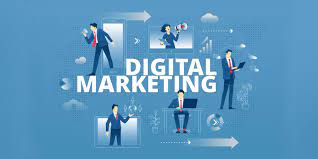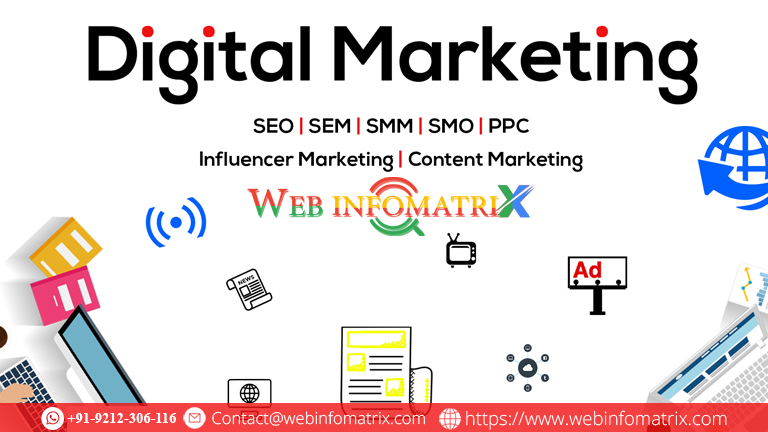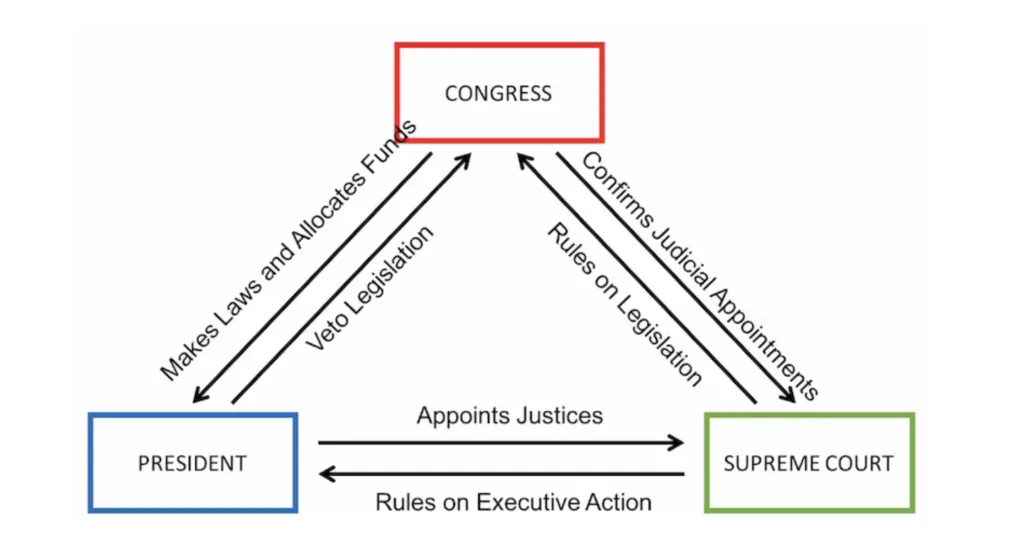Discover the Hidden Meanings Behind These 40 Company Logos
Uncover the intriguing stories and symbolism embedded in some of the most iconic company logos around the world. From subtle design elements to profound cultural references, each logo has a tale to tell that goes beyond its visual appeal. This article delves into the hidden meanings and clever design choices that make these logos memorable and impactful. Learn how these brands use visual storytelling to communicate their values, mission, and identity.

Logos serve as the visual representation of a brand and play a crucial role in shaping public perception. They are not just symbols but also convey the essence and values of the company. Many well-known logos have hidden meanings or stories that reveal more about the brands they represent. In this exploration, we will uncover the hidden meanings behind a selection of notable company logos, showcasing how design choices communicate deeper messages.
Understanding the Importance of Logo Design
The significance of logo design cannot be overstated. A logo is often the first point of interaction between a consumer and a brand. It creates an immediate impression and sets the tone for what the company represents. Effective logos are memorable, versatile, and timeless, allowing brands to maintain their identity over the years. Through colors, shapes, and fonts, logos can evoke emotions, convey messages, and establish connections with the target audience. Understanding the underlying meanings of logos adds an extra layer of appreciation for the artistry and thoughtfulness behind them.
The Psychology of Color in Logos
Colors play a vital role in logo design and can significantly impact consumer perceptions. Different colors evoke various emotions and associations, influencing how people perceive a brand. For instance, blue often conveys trust and reliability, making it a popular choice for technology companies. Green typically represents growth and sustainability, appealing to eco-conscious consumers. By analyzing the color choices in company logos, we can gain insights into the brand's identity and target audience.
Exploring Iconic Logos and Their Meanings
Many logos are designed with symbolism that reflects the brand’s values, mission, or history. Let’s delve into some iconic logos to uncover their hidden meanings.
The Apple Logo
The Apple logo, an apple with a bite taken out, is recognized globally. The bite represents knowledge and the quest for enlightenment, drawing parallels to the biblical story of Adam and Eve. The logo's sleek design reflects Apple's commitment to innovation and simplicity.
The FedEx Logo
At first glance, the FedEx logo appears straightforward, but it features a hidden arrow between the letters "E" and "x." This arrow symbolizes speed, precision, and progress, key attributes of the delivery service. The clever design showcases the brand's focus on efficiency and reliability.
The Amazon Logo
The Amazon logo features a smiley arrow that stretches from the letter "a" to "z," signifying that the company offers everything from A to Z. The arrow also conveys a sense of friendliness and customer satisfaction, reinforcing Amazon’s commitment to providing a positive shopping experience.
The Nike Logo
The Nike swoosh is a simple yet powerful logo that embodies movement and speed. It represents the wing of the Greek goddess of victory, Nike. The swoosh symbolizes triumph and athleticism, perfectly aligning with the brand’s mission to inspire athletes.
The Coca-Cola Logo
The Coca-Cola logo features a distinctive cursive font, which adds a sense of nostalgia and classic charm. The logo's red color evokes feelings of excitement and energy, aligning with the brand's image as a refreshing beverage. The flowing script represents the joy and happiness associated with enjoying a Coke.
The Volkswagen Logo
The Volkswagen logo consists of the letters "V" and "W" stacked inside a circle. The simple yet effective design symbolizes unity and balance, reflecting the brand's commitment to creating reliable and affordable vehicles for the masses.
The Starbucks Logo
The Starbucks logo features a siren, a mythical creature associated with allure and temptation. The siren represents the brand's commitment to enticing customers with high-quality coffee. The green color symbolizes growth and harmony, aligning with Starbucks' focus on sustainability and ethical sourcing.
The Adidas Logo
The Adidas logo features three stripes that symbolize performance and athleticism. The stripes represent a mountain, conveying the idea of overcoming challenges and reaching new heights. This design reflects the brand's mission to empower athletes and encourage them to push their limits.
The Pepsi Logo
The Pepsi logo features a circular design divided into red, white, and blue segments. The colors evoke a sense of patriotism and energy. The wave in the logo symbolizes movement and refreshment, aligning with the brand's identity as a beverage that revitalizes and energizes consumers.
The Airbnb Logo
The Airbnb logo features a stylized heart shape that represents belonging and community. The design conveys the idea of creating a home away from home for travelers. The logo's simplicity reflects Airbnb's commitment to making travel accessible and welcoming for everyone.
The Twitter Logo
The Twitter logo, a blue bird, symbolizes freedom and communication. The bird represents the concept of tweeting, conveying the idea of sharing thoughts and ideas quickly. The blue color evokes trust and professionalism, aligning with Twitter's mission as a platform for open dialogue.
The BMW Logo
The BMW logo features a circular design divided into quadrants of blue and white. The colors represent the flag of Bavaria, where the company originated. The logo's design reflects the brand's commitment to precision engineering and performance in luxury vehicles.
The Honda Logo
The Honda logo features a stylized "H" that represents speed and agility. The simplicity of the design conveys a sense of reliability and innovation, reflecting Honda's dedication to producing high-quality vehicles and technology.
The Google Logo
The Google logo uses a simple yet colorful font that represents playfulness and accessibility. The primary colors convey a sense of creativity and innovation. The logo's design reflects Google's mission to make information universally accessible and useful.
The IBM Logo
The IBM logo features bold, blue stripes that symbolize strength and innovation. The logo's design represents the brand's commitment to technology and progress. The blue color evokes trust and reliability, reinforcing IBM's reputation as a leader in the tech industry.
The Target Logo
The Target logo features a red bullseye, which represents precision and focus. The logo conveys a sense of fun and excitement, reflecting the brand's commitment to providing a positive shopping experience. The simplicity of the design allows it to be easily recognizable.
The Shell Logo
The Shell logo features a stylized shell design, representing the company's origins in the oil industry. The bright yellow and red colors convey energy and vitality, aligning with Shell's mission to provide sustainable energy solutions.
The Mastercard Logo
The Mastercard logo features two overlapping circles, one red and one yellow. This design symbolizes the brand's commitment to connecting people and facilitating transactions. The simplicity of the logo conveys trust and reliability in financial services.
The Unilever Logo
The Unilever logo features a stylized "U" composed of various icons representing the company's diverse range of products. This design reflects Unilever's commitment to sustainability and innovation while emphasizing its focus on improving consumers' lives.
The National Geographic Logo
The National Geographic logo features a simple yellow rectangle that represents exploration and adventure. The logo conveys a sense of curiosity and discovery, reflecting the organization's mission to inspire people to explore the world around them.
The Audi Logo
The Audi logo consists of four interlocking rings, representing the four founding companies of Auto Union. The design symbolizes unity and strength, reflecting Audi's commitment to quality and performance in the automotive industry.
The WWF Logo
The World Wildlife Fund logo features a panda, an endangered species that represents conservation efforts. The simplicity of the design conveys a sense of urgency in protecting wildlife and their habitats, aligning with the organization's mission to preserve the planet's biodiversity.
The Lego Logo
The Lego logo features a bold font in primary colors, reflecting the brand's focus on creativity and playfulness. The design evokes a sense of nostalgia for both children and adults, reinforcing Lego's commitment to inspiring imagination and creativity through play.
The Dell Logo
The Dell logo features a simple, bold font with a tilted "E," symbolizing innovation and creativity. The blue color evokes trust and reliability, reflecting Dell's commitment to providing high-quality technology solutions.
The Nokia Logo
The Nokia logo features a bold, blue font that symbolizes reliability and trust. The design reflects the brand's commitment to connecting people through innovative technology and communication solutions.
The FedEx Logo
The FedEx logo, with its hidden arrow, conveys a message of precision and speed. This clever design represents the brand's focus on efficient delivery services while reinforcing its commitment to excellence in logistics.
The T-Mobile Logo
The T-Mobile logo features a simple magenta "T" that symbolizes connectivity and communication. The vibrant color represents energy and excitement, reflecting the brand's mission to provide innovative mobile solutions.
The Gap Logo
The Gap logo features a simple, bold font that represents the brand's commitment to quality and style. The blue square symbolizes reliability, while the straightforward design reflects the brand's focus on classic American fashion.
The Subaru Logo
The Subaru logo features six stars representing the Pleiades star cluster. The design symbolizes unity and teamwork, reflecting Subaru's commitment to building vehicles that bring people together for shared adventures.
The eBay Logo
The eBay logo features a playful combination of colors that convey a sense of fun and excitement. The design reflects the brand's commitment to providing a diverse marketplace where buyers and sellers can connect.
The Chiquita Logo
The Chiquita logo features a cheerful woman holding bananas, representing the brand's commitment to freshness and quality. The vibrant colors and playful design evoke a sense of joy and warmth, reflecting the company's mission to bring happiness through its products.
The IKEA Logo
The IKEA logo features a simple, bold font set against a blue background. The yellow color represents optimism and affordability, aligning with IKEA's commitment to providing stylish and functional home furnishings at accessible prices.
The FedEx Logo
The FedEx logo is another example of effective design, featuring a hidden arrow between the letters "E" and "x." This subtle detail represents speed and precision, reinforcing the company's commitment to efficient delivery services.
What is the importance of FAQs for websites?
FAQs, or Frequently Asked Questions, are crucial for websites as they provide quick answers to common inquiries. They enhance user experience by reducing the time visitors spend searching for information. By addressing common concerns, FAQs help build trust and credibility with potential customers. Moreover, well-structured FAQs can improve a website's SEO by incorporating relevant keywords, thus increasing visibility in search engine results. This can lead to higher traffic and conversion rates, ultimately benefiting the business.
How do I create effective FAQs?
Creating effective FAQs involves several steps. First, identify common questions your audience has by reviewing customer inquiries, comments, and feedback. Next, categorize these questions based on topics for easier navigation. When writing answers, use clear and concise language to ensure understanding. Avoid jargon and complex terminology that might confuse users. Additionally, consider including links to relevant resources or articles for more in-depth information. Finally, regularly update your FAQs to reflect changes in your products, services, or industry.
What types of questions should be included in FAQs?
FAQs can cover a wide range of questions, including those about products, services, policies, and procedures. Common types of questions include inquiries about pricing, shipping, returns, technical support, account management, and usage instructions. It’s also beneficial to address concerns related to customer service, such as response times and contact methods. Including questions about company values, mission, or unique selling points can help build rapport with customers and strengthen brand loyalty.
How can FAQs improve customer satisfaction?
FAQs can significantly enhance customer satisfaction by providing immediate access to information. When customers find answers to their questions quickly, they feel valued and supported, which can lead to a positive impression of the brand. This accessibility helps to alleviate frustration, particularly when customers encounter issues or need assistance. By empowering users with knowledge, FAQs can reduce the number of support requests, allowing customer service teams to focus on more complex inquiries, further enhancing overall satisfaction.
What are the best practices for organizing FAQs?
Organizing FAQs effectively is essential for user experience. Begin by grouping questions into relevant categories to facilitate navigation. Use clear headings and subheadings to guide users through the sections. A search function can also be helpful, allowing visitors to find specific questions quickly. Consider using a collapsible format for answers, enabling users to expand or collapse sections as needed. Additionally, placing the most common questions at the top ensures that users can access critical information without scrolling extensively.
How often should FAQs be updated?
FAQs should be updated regularly to ensure accuracy and relevance. Changes in products, services, policies, or common customer inquiries necessitate updates. It’s advisable to review the FAQ section at least once every few months. Additionally, monitoring customer feedback and support requests can highlight areas where the FAQs may need adjustments. Keeping FAQs current not only improves user experience but also reflects the brand's commitment to transparency and customer care.
How can FAQs impact SEO?
FAQs can positively impact SEO in several ways. By including relevant keywords and phrases within the questions and answers, FAQs can improve search engine visibility. Search engines often display rich snippets that include FAQ content, increasing the chances of attracting clicks. Additionally, structured data markup can help search engines understand the content of the FAQ section, potentially leading to higher rankings. By driving organic traffic to the site, well-optimized FAQs can contribute to overall business growth.
Can FAQs reduce customer support costs?
Yes, FAQs can help reduce customer support costs. By providing self-service options for common inquiries, businesses can decrease the volume of support tickets and calls. This allows customer support teams to focus on more complex issues that require personalized assistance. A well-organized FAQ section can empower customers to find solutions independently, leading to increased efficiency and lower operational costs for the business.
How can I encourage users to read the FAQs?
Encouraging users to read FAQs can be achieved through strategic placement and clear communication. Highlight the FAQ section on your website, making it easily accessible from the main navigation menu. Use call-to-action prompts, such as “Have questions? Check our FAQs!” to draw attention. Additionally, consider integrating FAQs into customer interactions, such as email confirmations or chatbots, guiding users to relevant answers. Educating customers about the value of the FAQ section can also motivate them to utilize it for quick information.
What tools can help create and manage FAQs?
Various tools can assist in creating and managing FAQs effectively. Content management systems (CMS) like WordPress often have built-in FAQ plugins that simplify organization and display. Dedicated FAQ software solutions, such as Helpjuice or Zendesk, offer robust features for managing customer inquiries and analyzing performance. Knowledge base platforms like Document360 or Freshdesk can also help streamline the process of creating and maintaining FAQs, ensuring that the content remains current and relevant.
How can I measure the effectiveness of my FAQs?
Measuring the effectiveness of FAQs can be done through several metrics. Monitor website analytics to track page views, user engagement, and time spent on the FAQ section. Analyzing customer feedback and support requests can provide insights into common inquiries and whether FAQs effectively address them. You can also conduct surveys or gather customer testimonials regarding the usefulness of the FAQ section. These metrics will help identify areas for improvement and determine if the FAQs meet the needs of your audience.
What are some common mistakes to avoid when creating FAQs?
When creating FAQs, avoid several common mistakes. One of the most significant errors is providing vague or overly complicated answers that do not directly address user concerns. Additionally, failing to organize questions logically can lead to confusion and frustration. Ignoring regular updates can result in outdated information that misleads customers. It’s also crucial to avoid using jargon or technical language that may alienate some users. Finally, neglecting to promote the FAQ section can diminish its visibility and effectiveness.
How can I integrate FAQs into my overall customer support strategy?
Integrating FAQs into your overall customer support strategy involves aligning them with other support channels. Ensure that your FAQs are linked to customer service interactions, such as chatbots, email responses, and phone support. Train your support team to direct customers to the FAQ section for common inquiries, fostering a culture of self-service. Consider incorporating FAQs into onboarding materials for new customers to proactively address potential questions. This holistic approach will enhance the customer experience and create a seamless support process.
What are the benefits of using video in FAQs?
Incorporating video into FAQs can significantly enhance user experience. Visual content can simplify complex topics, making them more accessible and engaging. Video allows for demonstrations, tutorials, or walkthroughs that provide clarity beyond text-based answers. This format caters to different learning styles, accommodating users who prefer visual or auditory learning. Additionally, videos can increase time spent on the FAQ page, signaling to search engines that the content is valuable, potentially improving SEO.
How can I promote my FAQ section effectively?
Promoting your FAQ section effectively requires strategic marketing efforts. Utilize social media channels to share highlights from your FAQ content, encouraging followers to visit the website for more information. Consider including links to relevant FAQ articles in email newsletters or communications with customers. Collaborating with influencers or bloggers in your industry can also drive traffic to your FAQ section. Lastly, utilizing SEO best practices to optimize your FAQ page will improve its visibility in search engine results, attracting more visitors.
Get in Touch
Website – https://www.webinfomatrix.com
Mobile - +91 9212306116
Whatsapp – https://call.whatsapp.com/voice/9rqVJyqSNMhpdFkKPZGYKj
Skype – shalabh.mishra
Telegram – shalabhmishra
Email - info@webinfomatrix.com
What's Your Reaction?



















